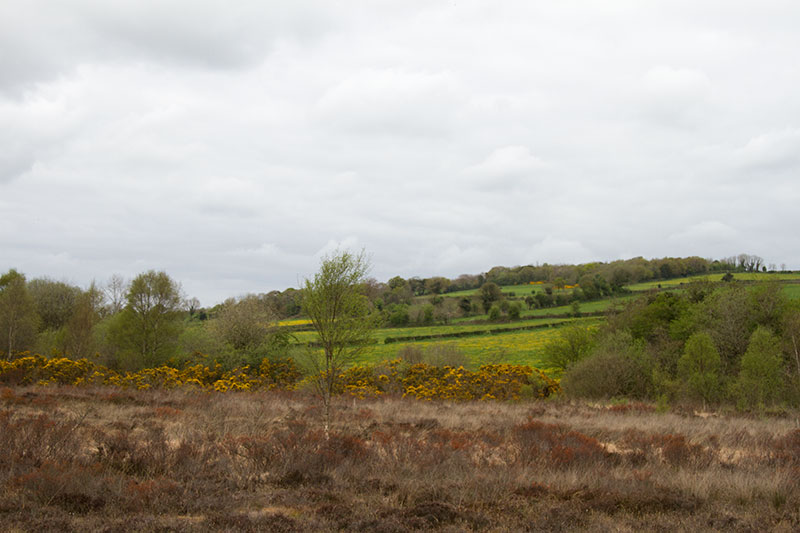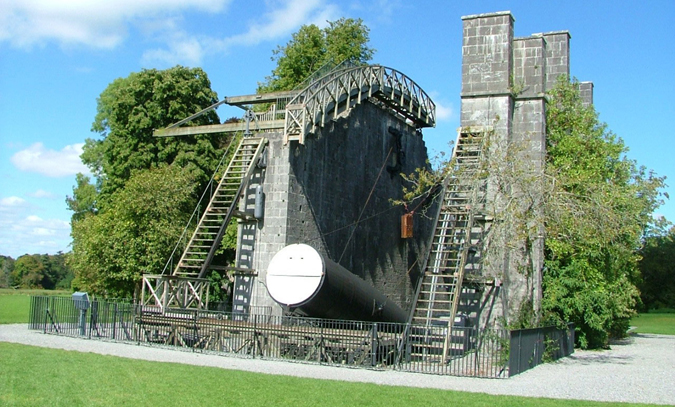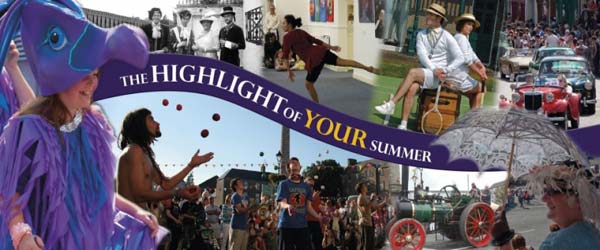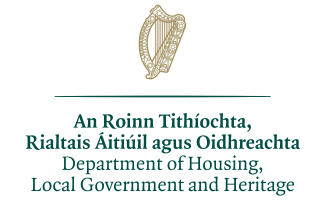At present there are NO visitor facilities at Sharavogue Bog SAC. Most of the bog is in private ownership so unsupervised visits are not advised, encouraged or allowed.
The bog is wet and dangerous, a constantly shifting mass of peat full of bog pools, deep and deceiving Sphagnum lawns and more dangers than you can shake a stick at.
The LIFE project will host open days on Sharavogue over the duration of the project, and local community events and and guided tours will take place on the bog in the near future.
Information on these will be posted here, on the events page and on the Local and Community Page. You can also keep up to date on any events on Sharavogue Bog and our other project sites by following and liking our social media. The Living Bog FACEBOOK page is updated daily, as is the project TWITTER page
Should you wish to visit Sharavogue Bog for research purposes, you can contact the NPWS via www.npws.ie
There is plenty to do and plenty to see in the area close to Sharavogue Bog, and the hidden gem that is Birr is only a short distance away.
BIRR
Formerly known as Parsonstown, Birr is one of the most historic and picturesque towns in Ireland – a jewel in the midlands – and is well worth a visit.
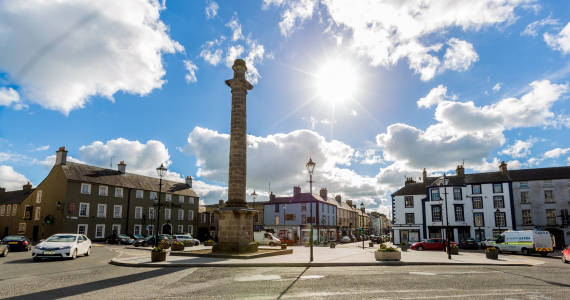
Birr is a designated Heritage Town with a carefully preserved Georgian heritage, of wide streets and elegant buildings. It is an ideal centre for touring the midlands, with everything from Birr Castle to the ‘Leviathan of Parsonstown’ (an astronomical telescope – at one stage the world’s biggest) to the Georgian Mills to the Workhouse to the parks along the River Camcor vying to keep you in the town. The first ever All-Ireland Hurling Final was played at Hoare’s Field in Birr (now a Tesco site) in 1888 between Tipperary and Galway.
Birr Castle Gardens and Science Centre
Birr Castle has become one of Ireland’s must-see attractions in recent years. As Birr Castle Gardens and Science Centre, it is a place where history, nature and science collide.
Allow yourself plenty of time to explore Birr Castle’s spectacular Gardens and fascinating Science Centre. For many years the Parsons family have invited the public to explore one of the most extraordinary places in Ireland. Created over generations it is an environmental and scientific time capsule, and if you are on the ‘Ireland’s Ancient East’ tour, it is a place you cannot miss.
Regardless of the time of year you visit, the award winning gardens won’t disappoint with their rare and exotic plants. The gardens are home to an abundance of rare plants, collected by the Earls of Rosse on their travels around the world over the last 150 years. Within the 50 hectares you will find the world’s tallest box hedges, over 40 champion trees, over 2000 species of plant as well as rivers, lake and waterfalls.
At the Science Centre, you travel back to the time when Birr Castle was a hub of scientific discovery and innovation, the third Earl was building the great telescope and his wife Mary was practising her photography. Later, their son Charles Parsons was inventing the steam turbine, which changed the face of seafaring and led to the invention of the jet engine. The interactive centre reveals the wonders of early photography, engineering and astronomy with a special emphasis on the brilliant design and assembly of the world famous Great Telescope.
The Great Telescope, designed and built by the third Earl of Rosse in the early 1840s, it was the largest telescope in the world. With this telescope, he discovered the spiral nature of some of the galaxies, and from 1845-1914, anyone wishing to witness this phenomenon had to come to Birr. This ‘leviathan’ as it is named, remains in the centre of the Demesne as Ireland’s greatest scientific wonder and represents a masterpiece of human creative genius – you can’t miss it!
Of course, kids also love the Castle. All you budding knights and princesses will find themselves lost in a world of imagination in the epic Treehouse Adventure Area. The playground features Ireland’s largest treehouse along with a bouncy pillow, sandpits and a hobbit hut. And while they’re busy in the Treehouse Adventure area, you deserve a coffee and a browse around the gift shop – and everyone’s happy!
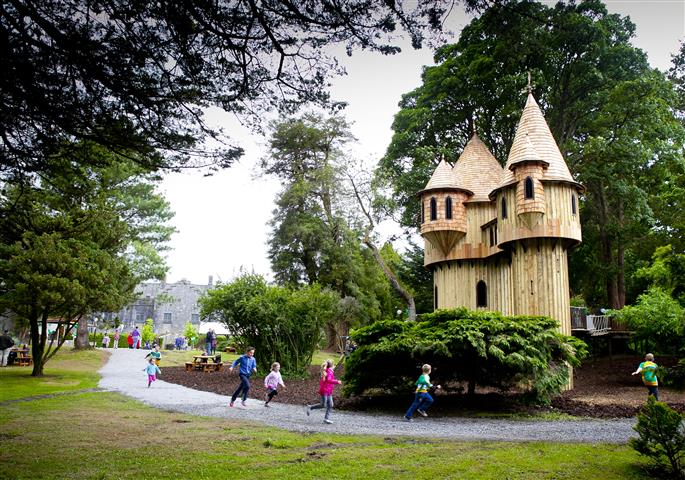
Birr Castle Treehouse Adventure Area
Birr Vintage Week
In July/early August the town comes alive as it celebrates our collective past with the highly-rated Birr Vintage Week, one of the great Irish town festivals. 2018 will be the 50th year of the Festival and the celebrations planned for the 50th anniversary should be spectacular!
For more, check out:
BIRR VINTAGE WEEK AND ARTS FESTIVAL
BIRR HISTORICAL SOCIETY
BIRR CASTLE
BIRR THEATRE & ARTS CENTRE
BIRR PHOTOGRAPHY GROUP
Offaly County Council have an extensive website www.offaly.ie which features excellent Heritage and Arts and Culture coverage.
TOURISM INFO
At present there are no visitor facilities on Mongan Bog. We will post more on open days, guided walks and other events here and on our Facebook and Twitter pages as they arise, e.g. Heritage Week. We have organised many tours on this amazing bog.
You can take in its beauty without engaging in some bog trotting.
The bog is best-viewed from the Pilgrim’s Road, or Pilgrim’s Way, an ancient raised road along the top of the glacial ridge, or esker. From this ancient road, which brought pilgrims into (and out of) Clonmacnoise since the early seventh century, you can look down on the impressive dome of Mongan Bog. The dome may not be as high as it was when Pilgrims visited Ireland’s oldest pilgrimage site, but it is still an awe-inspiriting sight.
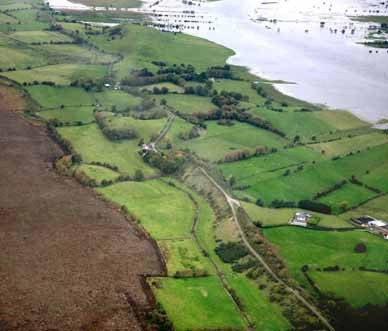 The Pilgrim’s Road offered safe passage to medieval travellers to and from Clonmacnoiseis.
The Pilgrim’s Road offered safe passage to medieval travellers to and from Clonmacnoiseis.
It leads from the monastic core eastwards through the old burial ground and dissects the New Graveyard where it heads towards the Nun’s Church; a small platform of stones known as ‘the Cairn of the Three Crosses’ is visible on its route. It is a key part of the pilgrimage route at Clonmacnoise known as ‘The Long Station’ performed on the Pattern of St Ciarán.
The Pilgrim’s Way from Ballycumber to Clonmacnoise was a part of the Pilgrim Paths Project, set up by the Heritage Council in 1997, in association with local communities, with the objective of developing a network of walking routes along medieval pilgrimage paths. The aim of the project was to raise the profile of the landscape and its heritage, built and natural that is encountered along the routes, while contributing to sustainable tourism and community development in each local area. Work on the Pilgrim’s Way was completed in
2007.
The Pilgrim’s Way demonstrates how the natural attributes of the landscape were used to benefit the development of the monastic city. The Pilgrim’s Way is a further reminder of the sacral nature of the landscape around Clonmacnoise.
You can exit at Clonmacnoise, following the ‘pointer’ signs for about 1km until you reach the rise of the road overlooking Mongan. As you stand in the centre of the road with the bog over one shoulder and the River Shannon over the other, it is one of Ireland’s most impressive sights. You are truly following in the footsteps of ancient pilgrims!
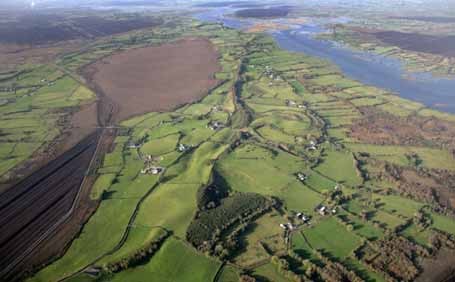
Clonmacnoise is one of the most popular and historic ancient monastic sites in Ireland. A walk amongst the peaceful stone ruins of this famous place will conjure images of the saints and scholars of Ireland’s renowned Golden Age of learning.
Founded by St Ciaran in the mid-6th century, it became a great centre of religion and learning, visited by scholars from all over the world. Many historical manuscripts, including the 11th century Annals of Tighernach and the 12th century Book of the Dun Cow, were written here.
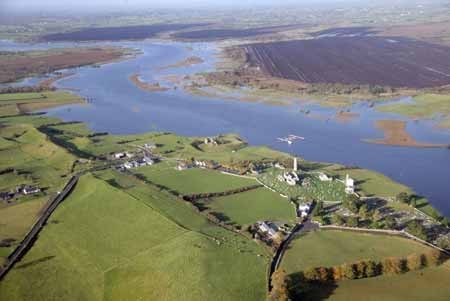
Today, the site exists as a preserved ruin under the management of the Office of Public Works and visitors can see three high crosses, a cathedral, seven churches and two round towers. The beautifully preserved structures of Clonmacnoise Cathedral, Temple Doolin, Temple Hurpan and Temple Melaghlin will impress and leave those who visit Clonmacnoise with an authentic sense of the history of Ireland.
To dig deeper into the fascinating history of Clonmacnoise, visit the on-site interpretive visitor centre, which displays a number of cross slabs and the 9th century Cross of the Scriptures. The Clonmacnoise graveyard surrounding the site continues to be in use, while religious services are held regularly on the site in a modern chapel.
Admission Prices
Adult: €8.00 | Senior/group: €6.00 | Child/student: €4.00 | Family: €20.00 |
Open all year, daily | November-Mid-March, 10:00am-5:30pm | Mid-March-May, 10:00am-6:00pm | June-August, 9:00am-6.30pm | September-October, 10:00am-6:00pm | Closed 25 and 26 December | Last admission is 45 minutes before closing.
VISIT OFFALY
For more on visiting the area, see the excellent VISIT OFFALY page on Clonmacnoise, and whilst you’re there, be sure to look around at the many places in Offaly to visit.
CROSSING THE BOGS
For people visiting Clonmacnoise, crossing the raised bogs would have been precarious as they contain permanent pools on their surface which vary greatly in depth. For this reason the eskers were preferred routes across the landscape. However, man had been interacting with this seemingly inhospitable landscape for centuries. Archaeological excavations have revealed the presence of wooden toghers (track ways) and gravel pathways across the bogs around Clonmacnoise which in many cases predate the monastery and demonstrate that the bogs were not as impenetrable as first thought.
Sadly, the drive for peat as a fuel and horticultural product has ensured that many of these have been badly damaged and/or obliterated.
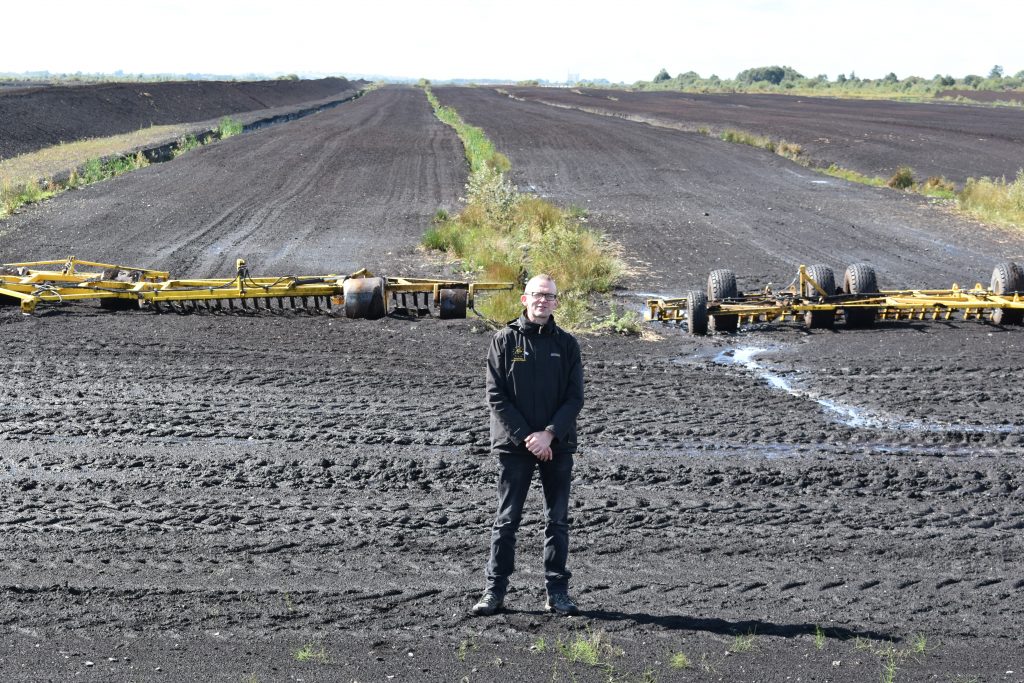
Ronan Casey from the Living Bog team stands at a typical ‘production bog’ close to Clonmacnoise and Mongan Bog SAC. in Co Offaly.

